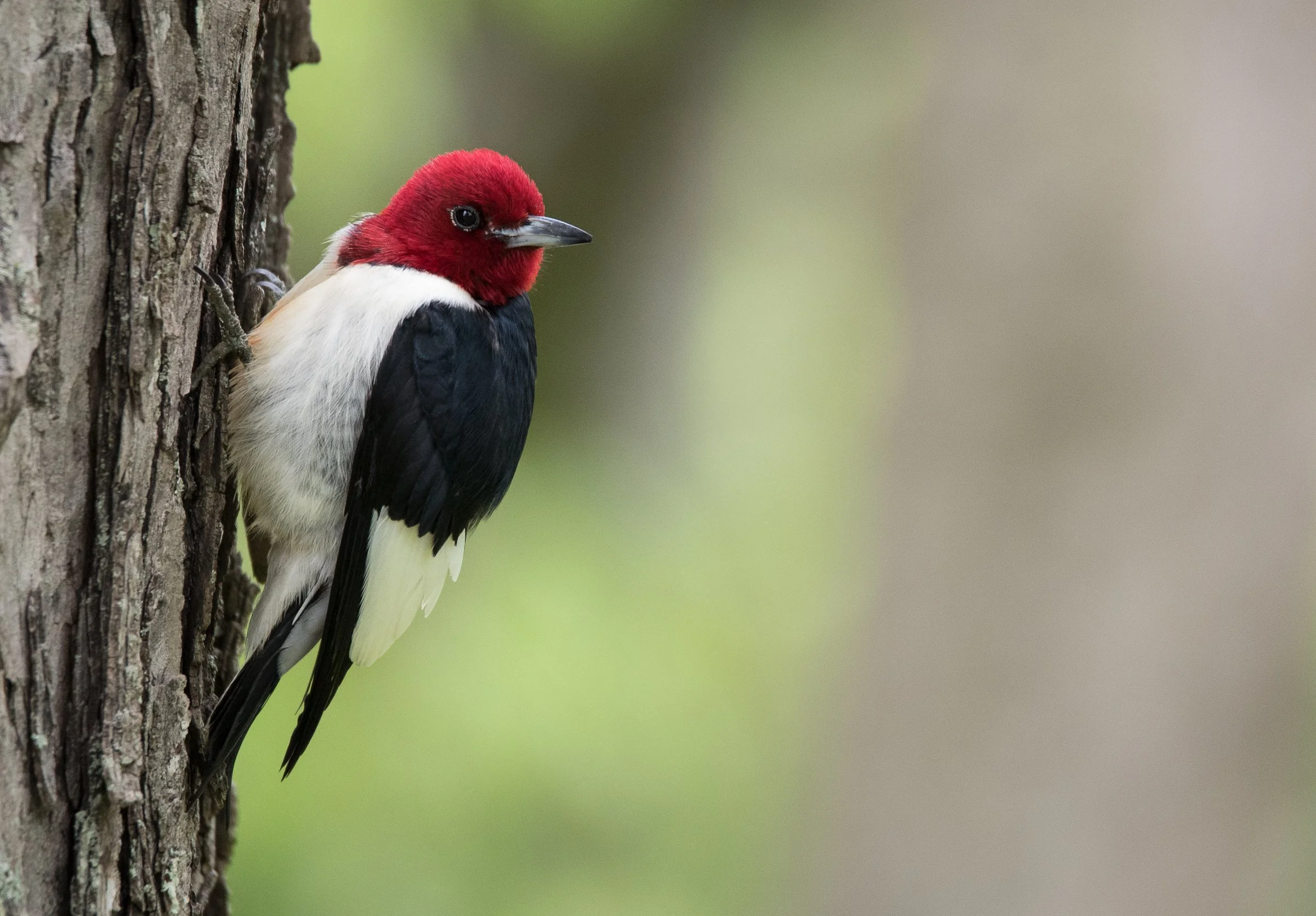Despite October traditionally being the slowest month of the year at bird feeders, there’s been a surprising amount of activity in the backyard and at feeders! Here are a few notes and observations from our week.
Abundance of Red-headed Woodpeckers:
We have now received several reports from both customers and local birding circles of an abundance of Red-headed Woodpeckers (not to be confused with Red-bellied wood peckers) this year, and in places where sightings were previously uncommon. Radnor Lake, for example, has become a hotspot of activity for them with 15 Red-headed Woodpeckers being sited and reported on TN-Bird.
Birds Caching Seed
Much of the activity at my feeders is birds making frequent repeated trips. They aren’t eating that much or that quickly, but taking seed and peanuts for the purpose of caching, or storing for the winter months ahead. This has been one of the busiest Octobers for caching I’ve ever seen. Chickadees, Tufted titmice, and Nuthatches have been known to store hundreds, maybe even thousands, of seeds behind bark or in small crevices and cavities of trees, and remember the locations. I recently found a stash of shelled peanuts on the framework of my garden shed door. I paid attention to a Tufted titmouse that flew in that direction and sure enough watched it deposit the peanut and come back to the feeder. So, is this extra storing going on because birds are sensing a “tough” winter coming, or is it because the very dry summer we had stifled seed production and they are aware of the lack of food that will be available?
Winter Plumage Goldfinch:
After nearly a month without any Goldfinch’s at my feeders a few appeared wearing their winter plumage. Goldfinches, of course, lose their bright yellow breeding plumage and become quite drab in appearance. Goldfinches are here year-round but move away from birdfeeders for a while in the fall as they gravitate to the natural food sources in field and meadow. We often see more Goldfinches in winter because birds that spent the summer north of us will move here for the milder climate. Usually by mid-March we will see Goldfinches begin to show signs of more yellow again. Give your finch feeder a tune-up and make sure recent rain hasn’t ruined the seed.
Winter/Nonbreeding Plumage American Goldfinch
Bluebirds Eating Suet:
In addition to numerous reports of bluebirds exploring nest boxes, we have begun to experience another fall/winter bluebird phenomenon: Bluebirds eating suet. It seems more of us see Bluebirds eating suet with every year that passes. It used to be a rarity but has become quite common. We typically expect to see this later in winter when natural food supplies, like berries, are running low and it is still too cold for insect activity. Suet is such a great offering because it tends to appeal to many birds considered the traditionally non-seed eating species, like Bluebirds, Ruby-crowned and Golden-crowned Kinglet, and Orange-crowned and Pine warbler to name a few. Two of us here at TWTS have had Western Tanagers visit our suet feeders during winter months.
Log Suet Feeder
Do you want to feed suet, but don’t like the look of traditional suet cages? We’ve got you covered! I recently dug my old Log Jammer feeders out of storage and have begun using them to great effect, drawing Chickadees, Titmice, Nuthatch, Downey Woodpeckers, and Red-bellied Woodpeckers. Some of our customers have made their own log suet feeders by drilling holes in a section of branch that has fallen and inserting a screw-eye for a hanger. It’s simple and very effective.









